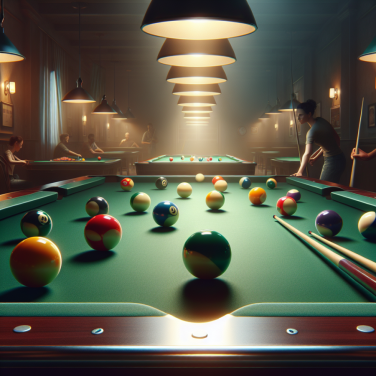Maximizing Your Serve to Secure the Advantage
In the sport of racquetball, maximizing your serve can significantly influence the pace and outcome of the game. A strategic, well-aimed serve puts your opponent on the defensive from the outset, allowing you to secure the advantage early on.
The key to maximizing your serve lies in precision and variety. First and foremost, you need to consider your positioning. Serving from different spots within the service zone can change the angle and trajectory of the ball, making it more difficult for your opponent to predict and return the serve effectively. By alternating your positioning regularly, you keep your opponent guessing, and you can prevent them from settling into a comfortable rhythm.
The power of a serve is also crucial. The drive serve, which is one of the most aggressive and fastest serves in racquetball, should be executed with full force, aiming low on the front wall so that the ball stays just above the service line on its way to the back court. However, power doesn't just come from arm strength; it's also about timing and body mechanics. A full-body serve that utilizes your shoulder, core, and leg strength will yield a more powerful impact without increasing the risk of injury from overuse of the arm.
A lob serve, in contrast, relies less on power and more on placement and finesse. By hitting the ball high on the front wall with a gentle touch, you can cause it to arc back into a corner, making it difficult for your opponent to generate offensive opportunities. The lob serve is particularly effective when you sense that your opponent is preparing for a power serve return; this change in pace can throw off their timing and positioning.
Another essential serve to master is the Z-serve, which is named for the path the ball takes after hitting the front wall. When executed correctly, the ball strikes the front wall, then one side wall, and ricochets across the court before hitting the opposite side wall, resulting in a challenging and unpredictable return for your opponent. The Z-serve is not only difficult to anticipate but also difficult to attack, often forcing a weak return.
The key to maximizing your serve, irrespective of the type, is deception. Mix up your serves between power drive serves, high lobs, and Z-serves to keep your opponent off balance. Also, the subtleties of body language can be crucial. Aiming your body in one direction while serving in another can deceive your opponent and gain you the upper hand.
Practice is vital in refining your serve.
Read also:
The Art and Excitement of Plate Spinning Performance
Defensive Play and Court Positioning: Keeping Your Opponent on Their Toes
Defensive Play in racquetball is a vital component that can put the pressure on your opponent and force them into making mistakes. When executed correctly, it prevents your opponent from gaining advantageous positions and sets you up for stronger offensive play.
To play defensively, you should focus on hitting the ball in such a way that maximizes your time to return to a good court position and minimizes your opponent's offensive opportunities. This often involves targeting the back corners of the court with high, deep shots called ceiling shots. Ceiling shots force your opponent to the back of the court and limit their ability to hit aggressive or kill shots.
Another key aspect of defensive play is the use of wide-angle passes, which send the ball around your opponent and to the back corners. These passes are designed to keep your opponent moving from side to side, which can be physically exhausting and mentally frustrating, leading to a break in concentration.
The defensive lob serve is another strategic play which, if executed well, can lead to an immediate defensive position for your opponent. A good lob serve will arc close to the back wall, making it difficult for the returner to attack aggressively.
Court positioning is equally important. The goal is to maintain what is called 'center court' position – an area about one-third of the way back from the service line and usually in the middle of the court. From here, you can react and reach most of the shots your opponent is likely to hit with minimum movement. Positioning yourself correctly and predicting where your opponent will hit the next shot plays a crucial role in being able to maintain a defensive strategy.
When playing defensively, you must also be vigilant to not become too passive. The transition from defense to offense should be smooth and occur when you sense your opponent is out of position or when you've successfully pushed them deep into the court. In these situations, a quick repositioning closer to the front wall can prepare you to go on the offensive and put pressure on your opponent with kill shots or passes that die in the back corners.
Keeping your opponent on their toes is about mixing shots and keeping them guessing. A well-placed pinch or splat shot can catch them off guard if they're anticipating another ceiling ball. Variability in your play ensures that your opponent cannot easily anticipate your moves, thus maintaining a strategic upper hand.
Maintaining a balance between offensive and defensive strategies in racquetball is crucial.




